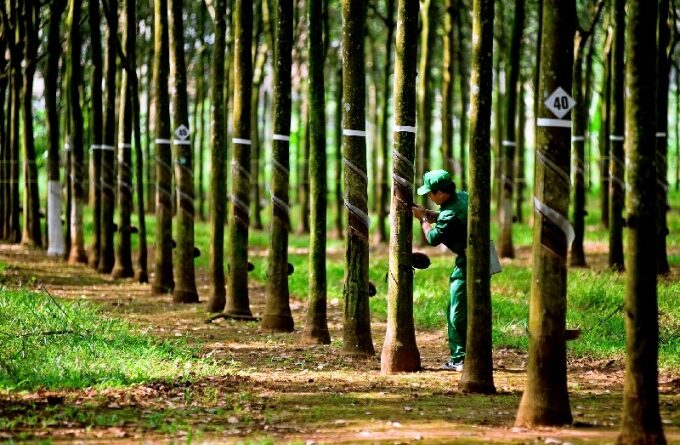Cambodia reports lower rubber exports for first half of 2023
Phnom Penh, Cambodia – The Phnom Penh Post reports that Cambodia netted $187.949 million from the export of natural rubber and rubber wood in the first half of this year, in light of declining demand in the global market, according to a report by the Ministry of Agriculture, Forestry and Fisheries’ General Directorate of Rubber (GDR).
Individually, natural rubber accounted for $187,106,946, selling for an average of $1,344 per tonne – down $252 or 15.81 per cent year-on-year. Rubber wood exports clocked in at $842,003, at an average of $306 per cubic metre.
These figures suggest that the amount of natural rubber exported in the January-June period fell in the range of 139,112-139,269 tonnes, accounting for rounding, while 2,742-2,757 cubic metres of rubber wood were shipped.
By comparison, statistics from the General Department of Customs and Excise of Cambodia (GDCE) show that the Kingdom exported $323.995 million worth of “rubber and articles thereof” in the first half of 2023.
This marks an increase of 42.09 per cent from $228.017 million in the first half of 2022, albeit a slight uptick of 3.30 per cent from $313.64 million in the second half of last year.
Men Sopheak, director of rubber grower-cum-exporter Sopheak Nika Investment Agro-Industrial Plants Co Ltd, told The Post on July 26 that export markets appear to be under increasing pressure from declining demand as the protracted Russia-Ukraine war has dampened global demand.
Similarly, China still has large stocks of rubber as manufacturers reduce production due to a lack of purchase orders for finished goods made with latex, he said. “The overall state of our export market seems to be weakening slightly due to tighter global demand while prices continue to fall.”
However, existing and planned car tyre factories in Preah Sihanouk, Kratie and Svay Rieng provinces are expected to absorb considerable amounts of locally-produced natural rubber. Sopheak too subscribes to the idea that these enterprises will undergird the Cambodian rubber industry.
He expressed confidence that the Kingdom is able to supply these factories with the product they require, which he said would help keep prices stable and reduce the rubber sector’s reliance on exports.
“I’ve met with [representatives of] these car tyre factories to find out about the qualities and standards of the latex [they need],” Sopheak assured.
He shared that Sopheak Nika Investment Agro-Industrial Plants currently manages about 140,000ha of rubber trees in Kampong Cham and Kampong Thom provinces, of which more than 110,000ha are tapped for latex. The company can export between 10,000 and 15,000 tonnes of natural latex per year, he claimed.
The GDR reported that as of end-2022, Cambodia had 404,578ha dedicated to rubber production, with 315,322ha or 77.94 per cent mature and tapped for latex.
In 2022, the Kingdom earned $531.864 million from the export of natural rubber latex and wood, down 12.85 per cent over 2021. Individually, rubber latex accounted for $527.775 million, and rubber wood for $4.089 million, according to the general directorate.
In the same vein, GDCE figures indicate that Cambodian exports of “rubber and articles thereof” last year came in at $541.661 million, registering increases of 28.34 per cent against 2021 and 230.28 per cent versus 2015.

